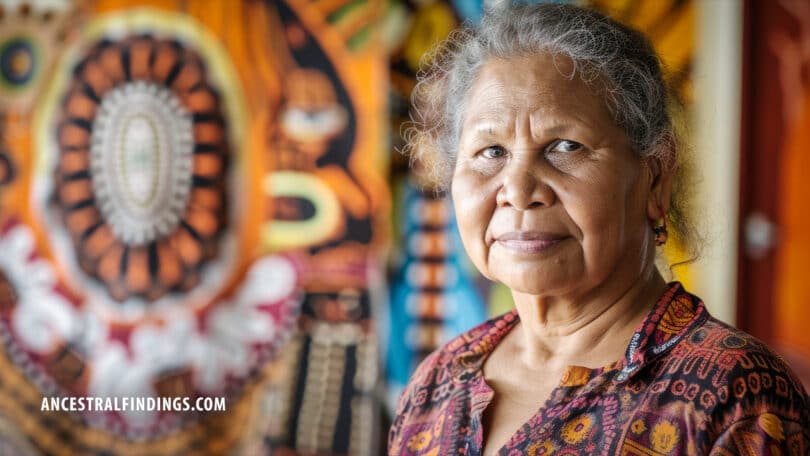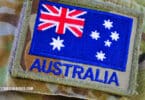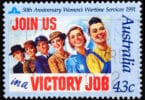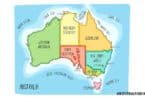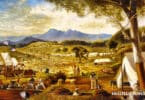Uncovering Indigenous Australian ancestry can be a unique and rewarding journey, but it often comes with challenges that differ from traditional genealogical research. Indigenous Australians passed down their history, culture, and family connections orally for thousands of years, leaving a rich legacy that isn’t always reflected in written records. However, as more and more genealogists seek to reconnect with their Indigenous roots, resources are becoming available to help uncover these often-hidden family stories.
This guide will help you overcome the specific hurdles involved in researching Indigenous Australian genealogy and provide practical resources.
Oral Histories: The Heart of Indigenous Ancestry
Imagine this: for centuries, stories were shared around the fire, passed down from elder to child, keeping the lineage alive in the minds and hearts of each generation. These stories weren’t written down in official registers or census records—they were lived, experienced, and spoken.
For genealogists, this oral tradition is both a treasure and a challenge. While it offers incredibly rich cultural knowledge, it’s harder to trace in the conventional sense. Unlike the neatly typed out records many researchers are used to, oral histories often change slightly with each retelling, shaped by time and perspective. But they remain a vital source for anyone looking to understand their Indigenous ancestry.
Working directly with Indigenous communities and elders is often the key to accessing these histories. Many Indigenous groups have preserved detailed genealogies through storytelling, songlines, and ceremonies, which can be invaluable for connecting with your family’s past.
The Impact of Colonization: Gaps in the Records
One of the biggest obstacles in tracing Indigenous Australian genealogy is the effect of colonization. When European settlers arrived in Australia in the late 18th century, they brought with them a system of land ownership and governance that disrupted Indigenous life. Forced relocations, violence, and government policies aimed at assimilation led to the destruction of many traditional ways of life and the displacement of entire communities.
Because of this, many Indigenous Australians were not included in early colonial records, and those who were recorded may not appear under their Indigenous names. For researchers, this creates significant gaps in the documentation of family history.
During the 20th century, government policies such as the Stolen Generations—where Aboriginal and Torres Strait Islander children were forcibly removed from their families—further fragmented family connections. Many Indigenous Australians lost contact with their relatives, making genealogical research even more complex.
Challenges of Name Changes and Lack of Written Records
In addition to the disruption caused by colonization, many Indigenous Australians adopted European names, either voluntarily or by force, making it difficult to trace their lineage through conventional records. Families were sometimes assigned new names by missionaries or government officials, erasing traditional surnames and disassociating people from their cultural heritage.
Moreover, for much of Australia’s history, Indigenous Australians were not counted in official censuses or civil registers, adding another layer of complexity for those trying to piece together their family history.
This means that genealogists often need to rely on a combination of oral traditions, community records, and alternative historical sources to fill in the gaps.
Resources for Tracing Indigenous Ancestry
Thankfully, growing resources are available to help genealogists research Indigenous Australian ancestry. Here are some of the key places to start:
• Australian Institute of Aboriginal and Torres Strait Islander Studies (AIATSIS)
AIATSIS is one of the most important resources for Indigenous genealogy. It offers a variety of records, including oral histories, photographs, and genealogical data, much of which is available online or by request. Its collections include everything from cultural records to historical documents that can help trace family connections.
Organizations like Link-Up provide specialized services to help Indigenous Australians reconnect with their families. This is particularly important for people affected by the Stolen Generations. They offer support with family tracing, document searches, and connecting individuals with long-lost relatives. They also provide access to records unavailable to the general public, such as government files and mission records.
• State Archives and Libraries
Many state libraries and archives hold specialized Indigenous collections. For example, the State Library of New South Wales and the Northern Territory Archives have extensive collections of mission records, government correspondence, and Indigenous community documents that can be crucial for researchers.
• National Archives of Australia (NAA)
The NAA holds government records that document Australia’s interactions with Indigenous communities, including records of the Stolen Generations. These records often include details of individuals and families who were removed from their communities or placed in missions and reserves.
• Community Collaboration
Sometimes, the best resource is found within the community itself. Reaching out to Indigenous elders or local groups can help connect you with oral histories or even lead you to family members who have already done some genealogical research. Many Indigenous communities have records or stories preserved within their own cultural frameworks.
Reconnecting the Pieces
Let’s consider a case study of a fictional person, Ella, who is trying to trace her Indigenous heritage. Ella knows that her grandmother, Mary, was part of the Stolen Generations and was sent on a mission as a child. Her family has little information beyond this.
By working with Link-Up and accessing records from the National Archives, Ella discovers government files documenting her grandmother’s removal and placement in the mission. These records provide details about Mary’s siblings and parents, which Ella uses to trace her extended family.
She then contacts AIATSIS and, through collaboration with local elders, learns about the specific clan her family belongs to. The community’s oral histories fill in many of the gaps, and Ella is able to reconnect with relatives she never knew existed.
This example highlights how genealogists can weave written and oral histories together to uncover their Indigenous roots, even when conventional records are sparse.
Embracing the Journey of Indigenous Genealogy
Researching Indigenous Australian genealogy is not always straightforward but offers an unparalleled connection to the past. As you explore these histories, you’ll find that it’s not just about names and dates—it’s about understanding the deep cultural heritage that has shaped the lives of your ancestors.
While the challenges are unique, the rewards are immense. Through patience, collaboration with Indigenous communities, and using available resources, genealogists can rediscover lost family stories and connect with the broader history of Australia’s First Peoples.
Read More:
“The Original Australians: Story of the Aboriginal People” by Josephine Flood
This comprehensive book provides an in-depth look at the history, culture, and lives of Indigenous Australians from ancient times to today, making it a valuable resource for anyone looking to explore their Indigenous roots and understand the broader historical context.
“Legendary Tales of the Australian Aborigines” by David Unaipon
Written by one of Australia’s most prominent Indigenous intellectuals, this collection weaves Aboriginal myths into a literary format, offering valuable insights into tribal laws, customs, and cultural heritage that are key to understanding Indigenous ancestry.
“Deep Time Dreaming: Uncovering Ancient Australia” by Billy Griffiths
This award-winning book explores the discoveries and debates surrounding the first human settlement of Australia, offering a fascinating look into archaeological findings that connect to Indigenous Australian history.
“Uncovering Australia: Archaeology, Indigenous People, and the Public” by Sarah Colley
This book provides an accessible overview of the conflicts and reconciliations between archaeologists, Indigenous people, and governments in Australia. It’s a great resource for understanding the evolving role of archaeology in revealing Indigenous heritage.
“Dark Emu” by Bruce Pascoe
This book challenges conventional views of pre-colonial Aboriginal life, presenting evidence that Indigenous Australians engaged in agricultural practices long before European settlement. It’s an essential read for understanding the complexity of Indigenous cultures.

